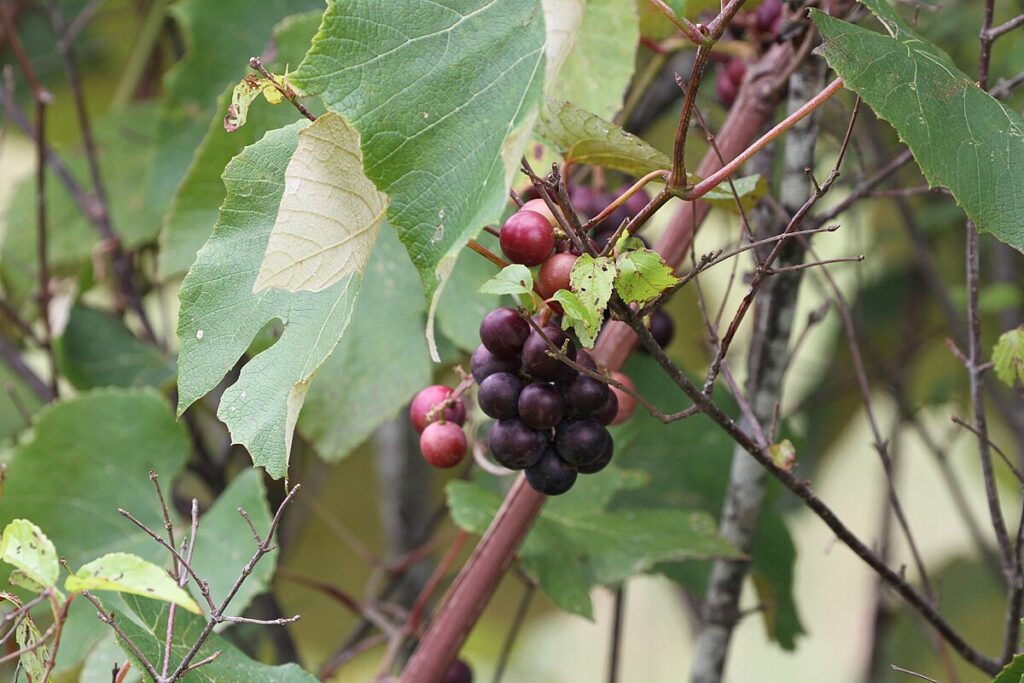Maintaining skin integrity is a complex and crucial biological process, particularly as skin ages or becomes compromised, where effective wound healing and barrier restoration are vital for overall health and protection against environmental stressors, dehydration, and pathogens. Impaired wound healing, often linked to age-related declines in cellular functions, presents a significant challenge in both clinical dermatology and cosmetic research. Key molecular markers such as matrix metalloproteinases (MMPs), which degrade collagen and other extracellular matrix (ECM) components, contribute to skin aging and delayed healing, while filaggrin is crucial for barrier function, and pro-collagen synthesis is essential for dermal matrix integrity.
There is a growing interest in plant-derived natural products as potential wound healing agents due to their antioxidant, anti-inflammatory, and regenerative properties. Among these, Vitis labruscana B. ‘Campbell Early’, an East Asian table grape cultivar rich in polyphenols like resveratrol analogs, has shown promise in antioxidant efficacy and skin health. Specifically, ε-Viniferin, a potent resveratrol dimer known for its antioxidant and anti-inflammatory attributes, has garnered attention for its ability to modulate aging-related cellular pathways. This study explored the wound healing efficacy and epidermal barrier-restoring effects of purified ε-Viniferin and Vino Chocolate™, an ε-Viniferin-enriched extract derived from Vitis labruscana B. ‘Campbell Early’ grape flower cell cultures. The use of grape flower-derived plant cell cultures represents a novel and underexplored approach in dermocosmetic research, offering a sustainable, consistent, and controlled method for producing bioactive secondary metabolites, free from seasonal or environmental fluctuations, and with a reduced ecological footprint compared to traditional harvesting.
Methods
The study investigated the effects of ε-Viniferin and Vino Chocolate™ through in vitro assays on human dermal fibroblasts (HDFn) and HaCaT keratinocytes. Key methodologies included cell viability assessment using the WST-1 assay, a scratch wound assay to evaluate fibroblast migration, and ELISA to quantify pro-collagen type I (COL1A1) and matrix metalloproteinases (MMP-1 and MMP-3) levels. Filaggrin protein expression in keratinocytes was analyzed by Western blot, and high-performance liquid chromatography (HPLC) was used to confirm and quantify ε-Viniferin in the Vino Chocolate™ extract. Retinoic acid (RA), transforming growth factor-beta 1 (TGF-β1), and fetal bovine serum (FBS) were used as positive controls for comparison.
Key Findings
• ε-Viniferin Concentration: HPLC analysis confirmed a high concentration of ε-Viniferin (547.58 ppm) in the Vino Chocolate™ extract, alongside other co-extracted phytochemicals.
• Cell Viability and Safety: Both ε-Viniferin and Vino Chocolate™ maintained cell viability up to 5 ppm in HaCaT and HDFn cells, establishing non-cytotoxic concentrations for subsequent experiments.
• Enhanced Fibroblast Migration: Treatment with both compounds significantly enhanced fibroblast migration in a dose-dependent manner. At 1 ppm, their wound closure efficacy was comparable to or even exceeded the 2% FBS positive control.
• Increased Pro-Collagen Type I Synthesis: Both treatments induced a dose-dependent increase in pro-collagen type I alpha 1 (COL1A1) synthesis. Notably, 1 ppm ε-Viniferin elevated COL1A1 levels by approximately 212.34% compared to the untreated control, surpassing the effect of TGF-β1.
• Suppression of Matrix Metalloproteinases (MMPs): ε-Viniferin and Vino Chocolate™ significantly suppressed the expression of MMP-1 and MMP-3 in a concentration-dependent manner. At 5 ppm, the inhibition of both MMP-1 and MMP-3 was comparable to or greater than retinoic acid, a known inhibitor. The heightened sensitivity of MMP-3 to these treatments suggests potential attenuation of matrix degradation and chronic inflammation.
• Upregulation of Filaggrin Expression: Western blot analysis revealed a time- and dose-dependent upregulation of filaggrin expression in HaCaT keratinocytes, particularly at 5 ppm after 72 hours. This suggests an improved epidermal barrier function.
Future implications include the need for further in vivo and clinical investigations to fully clarify their role in supporting skin regeneration. Additionally, more detailed mechanistic studies focusing on key signaling pathways such as MAPK, NF-κB, and TGF-β are essential to understand the intricate processes behind their bioactivities. Given the complex nature of Vino Chocolate™, comprehensive metabolomic profiling and bioactivity-guided fractionation will be crucial to elucidate the contribution of other polyphenolic compounds and their potential synergistic mechanisms, paving the way for the rational design of optimized multifunctional cosmeceutical formulations.
Link to the study: https://www.mdpi.com/2079-9284/12/5/181


